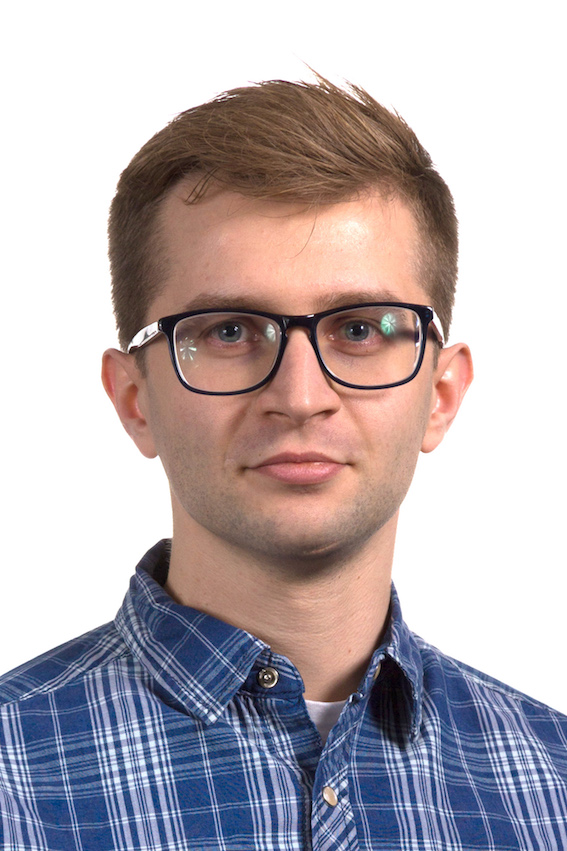Aleksandr Diment
Researcher
Audio Research Group
Tampere University
(previously known as Tampere University of Technology)

| Email: | firstname.lastname@tuni.fi |
Publications
-
V.-V. Eklund, A. Diment, T. Virtanen.
Noise, Device and Room Robustness Methods for Pronunciation Error Detection . First published in the Proceedings of the 30th European Signal Processing Conference in 2022, published by EURASIP. -
A. Diment, E. Fagerlund, A. Benfield and T. Virtanen.
Detection of Typical Pronunciation Errors in Non-native English Speech Using Convolutional Recurrent Neural Networks . In proc. of International Joint Conference on Neural Networks (IJCNN), 2019. -
A. Mesaros, A. Diment, B. Elizalde, T. Heittola, E. Vincent,
B. Raj, and T. Virtanen.
Sound Event Detection in the DCASE 2017 Challenge . In IEEE/ACM Transactions on Audio, Speech, and Language Processing, 2019, in press. -
J. Nikunen, A. Diment, T. Virtanen.
Separation of Moving Sound Sources Using Multichannel NMF and Acoustic Tracking . In IEEE/ACM Transactions on Audio, Speech and Language Processing, 2018. -
A. Diment and T. Virtanen.
Transfer Learning of Weakly Labelled Audio . In proc. of IEEE Workshop on Applications of Signal Processing to Audio and Acoustics (WASPAA), 2017. - T. Virtanen, A. Mesaros, T. Heittola, A. Diment, E. Vincent, E. Benetos, B. M. Elizalde. (eds.)
Proceedings of the Detection and Classification of Acoustic Scenes and Events 2017 Workshop (DCASE2017) . Tampere University of Technology. Laboratory of Signal Processing, 2017. 142 p. - A. Mesaros, T. Heittola, A. Diment, B. Elizalde, A. Shah, R. Badlani, E. Vincent, B. Raj, and T. Virtanen.
DCASE 2017 challenge setup: tasks, datasets and baseline system . In Proceedings of the Detection and Classification of Acoustic Scenes and Events 2017 Workshop (DCASE2017). November 2017. -
M. Valenti, A. Diment, G. Parascandolo, S. Squartini, T. Virtanen.
DCASE 2016 Acoustic Scene Classification Using Convolutional Neural Networks . In proceedings of the 2017 International Joint Conference on Neural Networks, Anchorage, Alaska, USA.
-
M. Valenti, A. Diment, G. Parascandolo, S. Squartini, T. Virtanen.
DCASE 2016 Acoustic Scene Classification Using Convolutional Neural Networks . In proceedings of the 2016 Workshop on Detection and Classification of Acoustic Scenes and Events (DCASE 2016), Budapest, Hungary. -
A. Diment, M. Parviainen, T. Virtanen, R. Zelov, A. Glasman.
Noise-robust detection of whispering in telephone calls using deep neural networks . First published in the Proceedings of the 24th European Signal Processing Conference (EUSIPCO-2016) in 2016, published by EURASIP. -
A. Diment and T. Virtanen.
Archetypal analysis for audio dictionary learning. In proc. IEEE Workshop on Applications of Signal Processing to Audio and Acoustics (WASPAA), 2015. -
J. Nikunen, A. Diment, T. Virtanen, M. Vilermo.
Binaural rendering of microphone array captures based on source separation , Speech Communication, Available online 21 September 2015, ISSN 0167-6393.
Thesis supervision
- E. Nieminen.
Building and Visualizing a Percussion Dataset Using Deep Audio Embeddings and Dimensionality Reduction , BSc thesis, Tampere University, 2020. - V.-V. Eklund.
Data Augmentation Techniques for Robust Audio Analysis , MSc thesis, Tampere University, 2019. - T. Honka.
One-shot Learning with Siamese Networks for Environmental Audio , BSc thesis, Tampere University, 2019. - V.-V. Eklund.
Audio dataset creation , BSc thesis, Tampere University of Technology, 2018. - M. Valenti.
Convolutional neural networks for acoustic scene classification , MSc thesis, Tampere University of Technology, 2016.
Teaching
- 2016-2017:
- 2014-2015:
- 2013-2014:
- 2012-2013:
Page design based on theme by orderedlist, CC BY-SA 3.0.